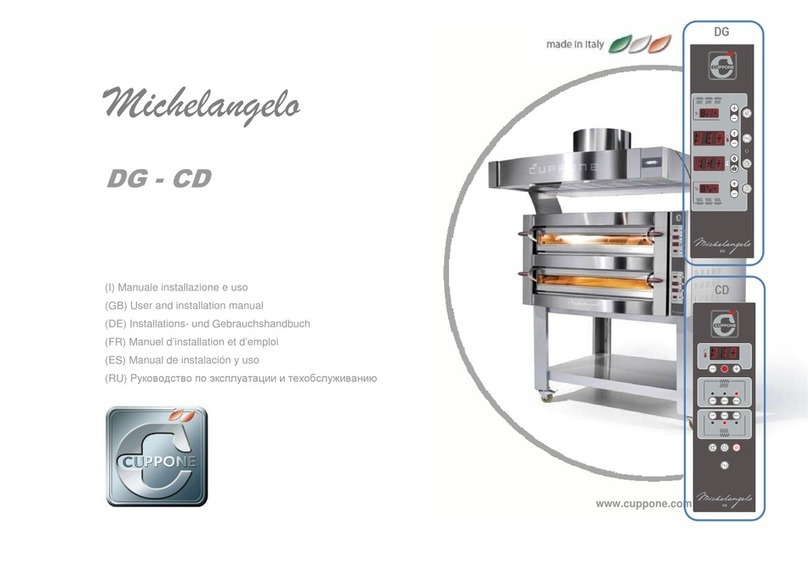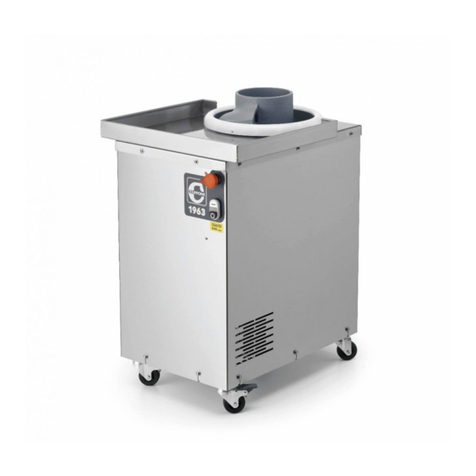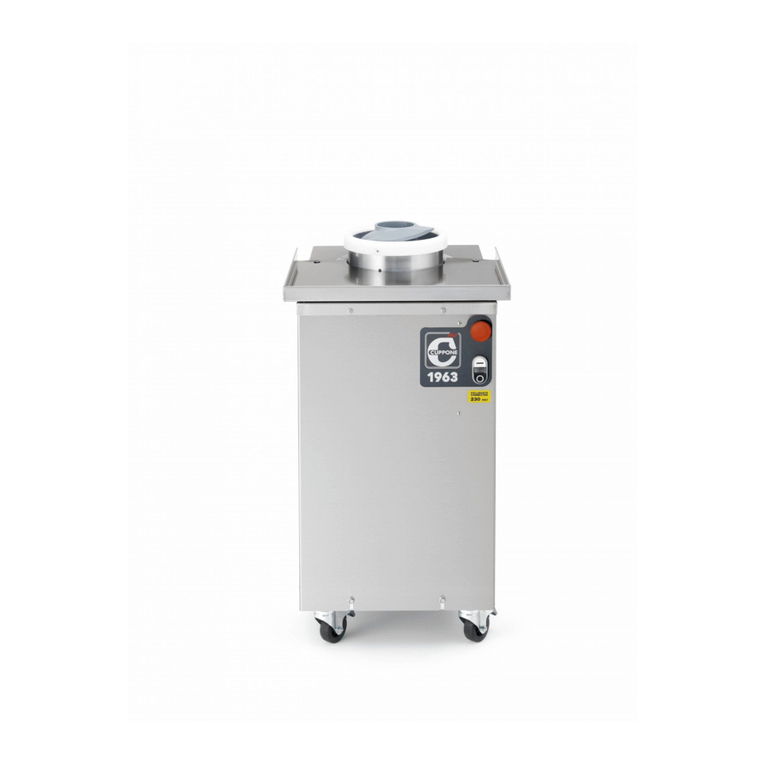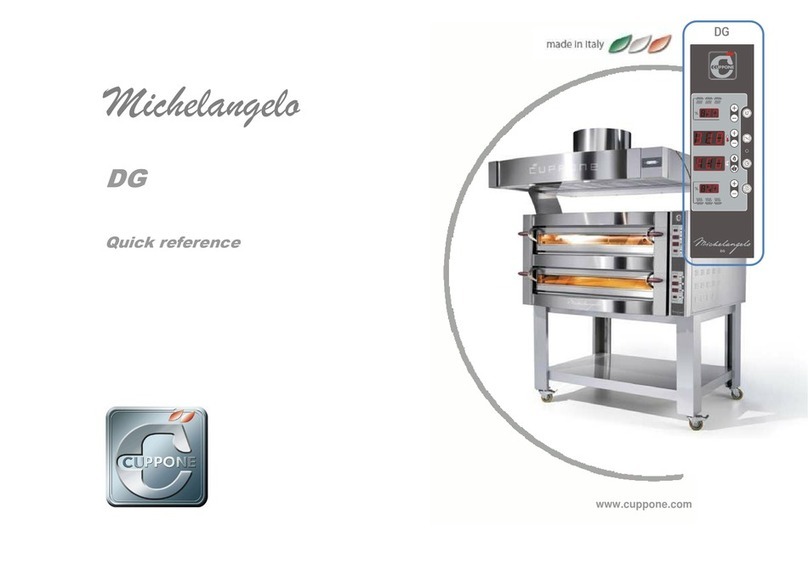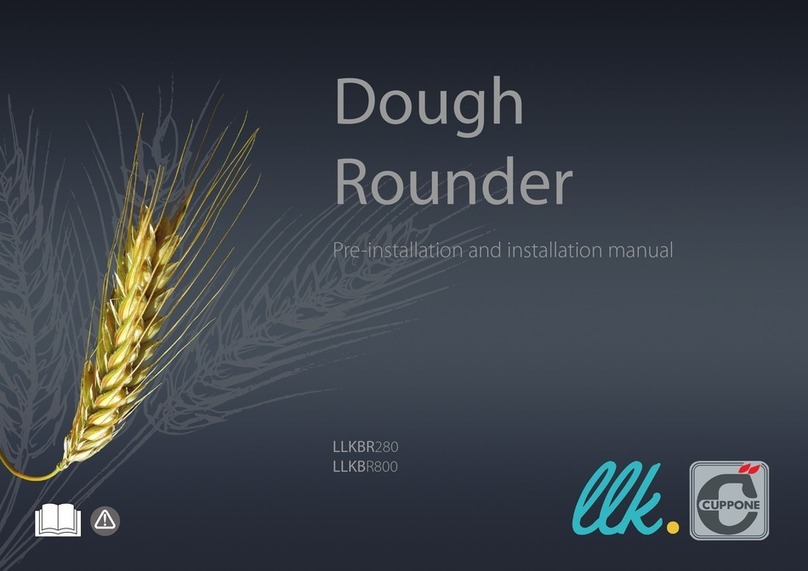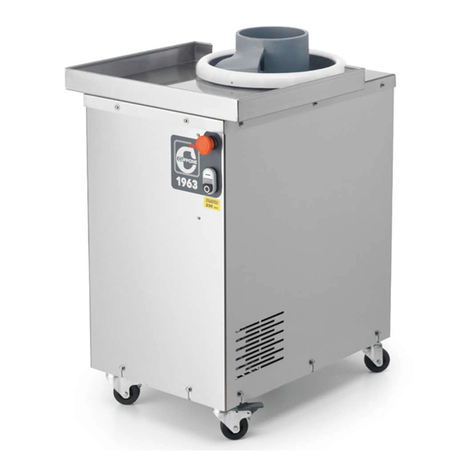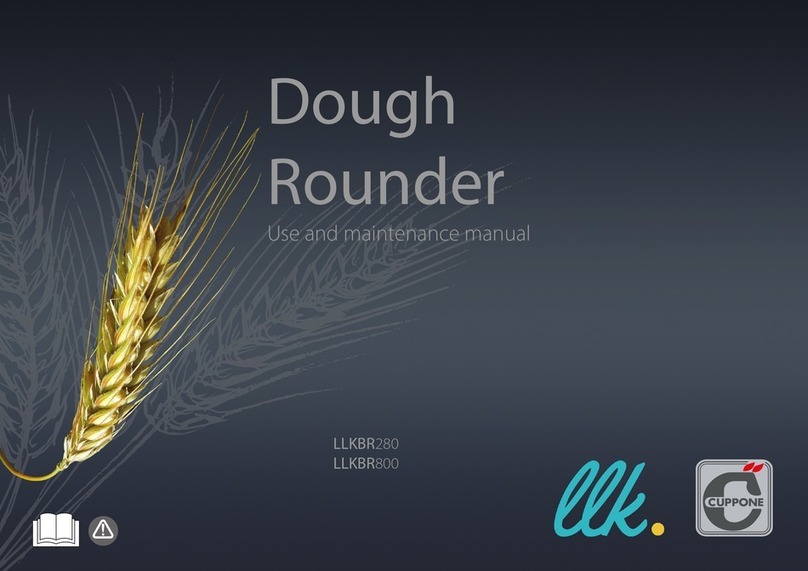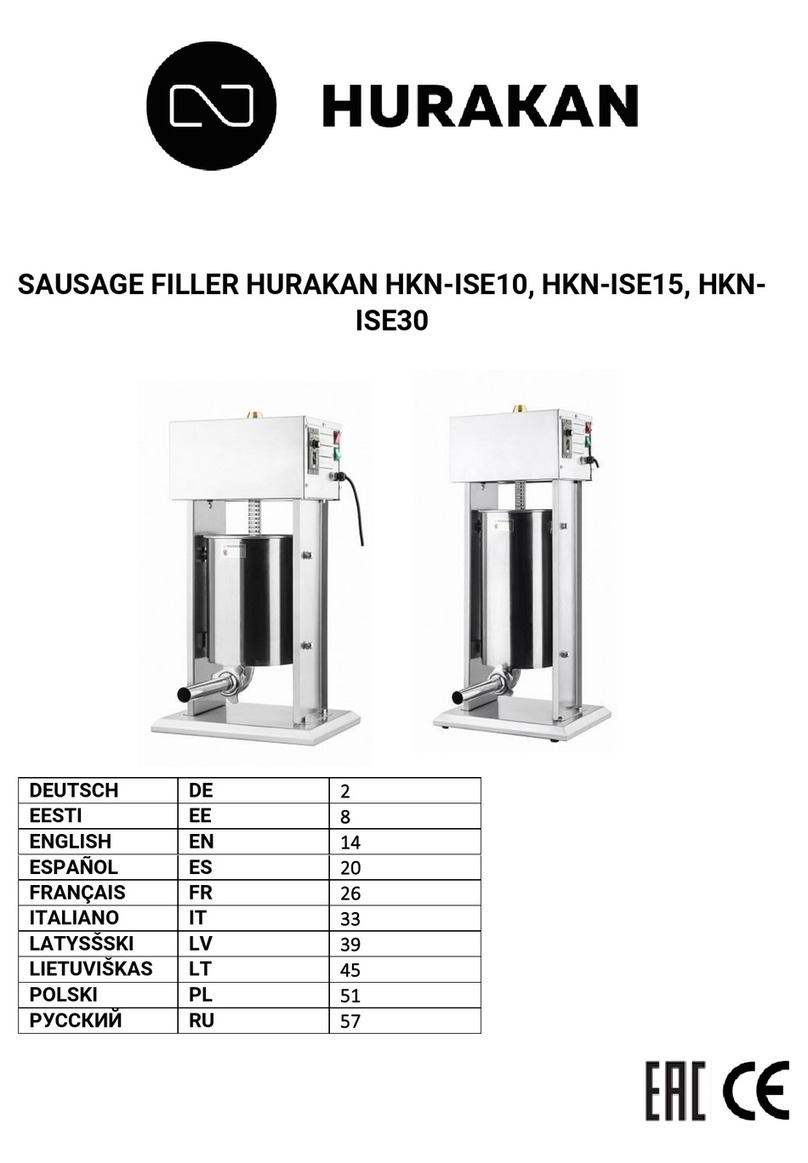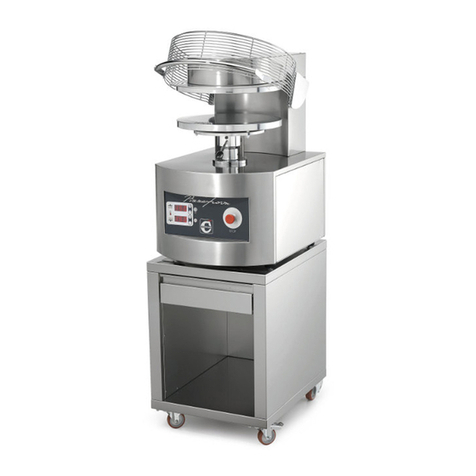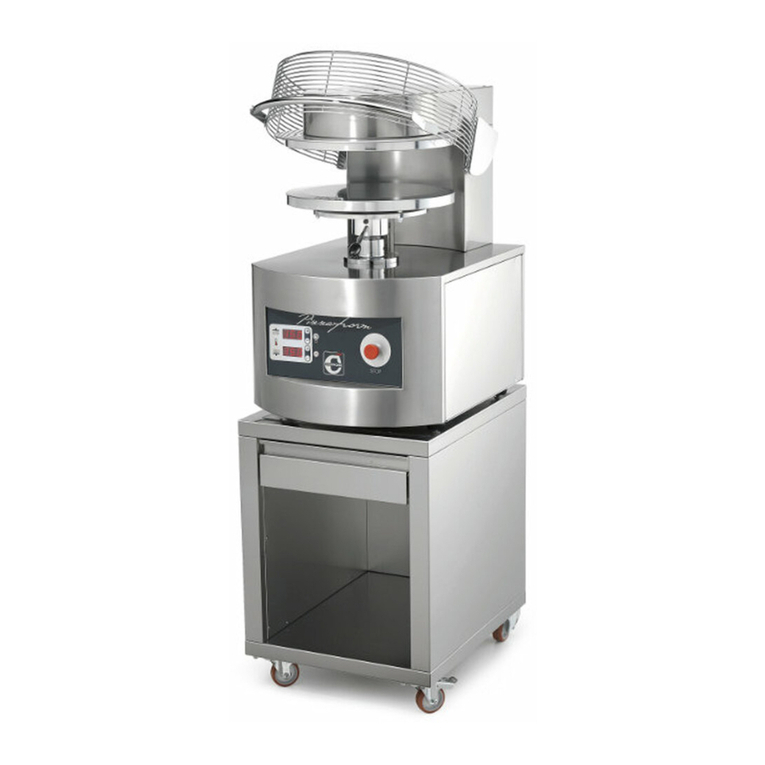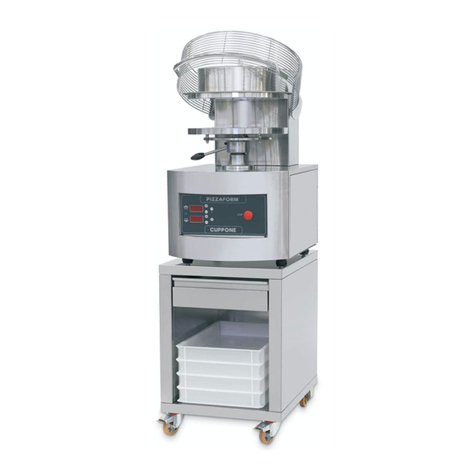
4
• Read this guide carefully before using and main-
taining the appliance, and keep it with care in an
accessible place for any future consultation by
the various operators.
• Moreover, the manual must always accompany
the product through its life, even in case of trans-
fer.
• Before performing any maintenance, disconnect
the electricity supply.
• Unauthorised actions, tampering or modifica-
tions that do not follow the information provid-
ed in this manual can cause damages, injuries or
fatal accidents and null and void the warranty.
• Use or maintenance that fail to comply with the
instructions in this manual may cause damage,
injury or fatal accidents.
• The rating plate provides important technical
information that is vital in case of a request for
maintenance or repair of the appliance: please
do not remove, damage or modify it.
• Some parts of the appliance may reach high
temperatures. We recommend you avoid touch-
ing surfaces and do not get materials either flam-
mable or sensitive to heat near the appliance.
• Do not rest objects on the product, above all if
built in material sensitive to heat.
• These appliances are intended for use in com-
mercial applications, for example in kitchens,
restaurants, canteens, hospitals and commercial
companies such as bakeries, butcher shops, etc.,
but not for the continuous or mass production
of food.
Any use other than that indicated is con-
sidered improper, potentially dangerous for peo-
ple and animals and might irreparably damage
the equipment. Improper use of the equipment
voids the warranty.
• The device can be used by children aged 8 and
under and by persons with reduced physical,
sensory or mental abilities, or lacking in expe-
rience or the necessary knowledge, provided
they are under surveillance or after they have re-
ceived instructions relating to the safe use of the
appliance and understand the dangers inherent
in it. Children must not play with the appliance.
Cleaning and maintenance designed to be car-
ried out by the user must not be carried out by
unsupervised children.
• The staff using the appliance must be profes-
sionally prepared and periodically trained on its
use, as well as the safety and accident preven-
tion regulations.
• Children must be supervised to make sure they
do not play with the appliance or parts of it.
• FIRE HAZARD: leave the area around the equip-
ment free and clean of fuels. Do not keep flam-
mable materials near this appliance.
• WARNING: EXPLOSION HAZARD! It is forbidden
to use the product in potentially explosive envi-
ronments.
• WARNING: always switch off the main switch
when you finish using the appliance, above all
during cleaning or in cases of prolonged down-
time.
• If you notice any anomaly (e.g. damaged power
cable, etc.), malfunction or fault, do not use the
appliance and contact a Service Centre author-
Safety instructions
ized by the Manufacturer. Ask for original spare
parts or the Warranty will be forfeited.
• To avoid risks, if the power cable is damaged, it
must be replaced by the manufacturer, its ser-
vice agent or qualified personnel.
• Place the emergency phone numbers in a visible
location.
• Monitor the appliance during its entire oper-
ation, do not leave dishes in the product unat-
tended!
• Failure to follow these regulations may cause
damage or even fatal injury, subsequently inval-
idating the guarantee and relieving the Manu-
facturer of all liability.
• We recommend you have the appliance checked
by an Authorized Service Centre at least once a
year.
